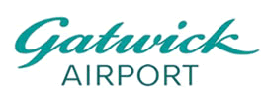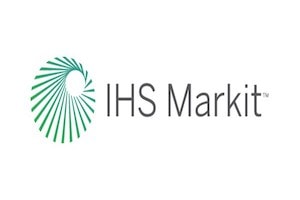You Ask, We Answer: How Does Grafana Compare Against Datadog, Splunk, and Kibana?
Here at Sirius Open Source, we often get asked, "How does Grafana truly compare in the ‘Observability’ market?" This is a very good question, and one that deserves a clear, honest answer. We understand that selecting the right observability platform is rarely a simple feature comparison; it is a long-term economic and cultural decision a business must live with for years.
We want to be upfront: Grafana’s strength lies in its flexibility, open standards, and vendor-agnostic integration capabilities. This "Big Tent" philosophy is ideal for cost control and autonomy. However, this very modularity often contrasts sharply with the out-of-the-box ease, velocity, and standardization offered by proprietary "Walled Garden" solutions like Datadog.
This article will explain the key architectural, economic, and operational differences that determine which platform is the best fit for your specific organizational DNA. We aim to be fiercely transparent, allowing you to make the most informed decision possible.
The Philosophical Divide: Big Tent vs. Walled Garden
The competitive landscape is defined by two fundamental philosophies regarding data management. The choice between them dictates an organization's preference for either flexibility or ease of use.
| Philosophical Model | Grafana (Big Tent) | Datadog/Splunk (Walled Garden) |
|---|---|---|
| Data Strategy | Visualizes data where it already lives (decentralized data gravity). | Value is predicated on ingesting data into a unified, proprietary store. |
| Core Value | Flexibility, Open Standards (OpenTelemetry), and Vendor Lock-in avoidance. | Speed of implementation, reduced operational overhead, cohesive out-of-the-box experience. |
| Organizational Fit | Organizations valuing autonomy and cost-efficiency at scale. | Organizations prioritizing velocity and standardization (often at a premium cost). |
Grafana has evolved from a simple visualization tool into a comprehensive, composable observability ecosystem. Its "Big Tent" strategy means it acts as a unifying translation layer, allowing visualization across disparate data silos—a critical advantage when dealing with data sovereignty or high egress costs.
Grafana vs. Datadog: The Economic and Operational Trade-Off
The comparison between Grafana and Datadog represents the industry’s central choice between a modular, self-assembled stack (Grafana LGTM: Loki, Grafana, Tempo, Mimir) and a cohesive, managed SaaS platform. This divergence is deeply economic.
Pricing Architecture and Cost Predictability
The economic models of the two platforms differ dramatically and are often the primary drivers for migration projects.
| Pricing Factor | Datadog (Walled Garden) | Grafana Cloud (Big Tent) |
|---|---|---|
| Metric Base Cost | Per Host. | Per Active Series (benefiting dense environments like Kubernetes). |
| Cost Volatility Risk | High. Driven by Custom Metrics overages and cardinality explosion. | Low. Metrics are protected by 95th Percentile Billing. |
| Cost Insurance | Limited. High-cardinality data is a frequent source of unexpected, massive bills. | Excludes the top 5% of usage time (approx. 36 hours monthly), protecting against spikes from incidents or load testing. |
Datadog is superior for Time to Value (TTV), as its monolithic agent automatically detects and begins collection immediately, requiring less cognitive load from product developers. However, the cost frequently scales super-linearly. In modern microservices, the Custom Metrics tax (incurred when exceeding 100 custom metrics per host, charged around $0.10 per 100 metrics) is a notorious source of six-figure "billing shock".
The TCO Break-Even Point
For most enterprises, the Total Cost of Ownership (TCO) analysis centers on labor arbitrage. Organizations often migrate from Datadog to Grafana (self-hosted or hybrid) when the proprietary SaaS bill exceeds a specific threshold.
The break-even point typically occurs when the cloud bill exceeds the cost of 1–2 Full-Time Equivalent (FTE) dedicated engineers. Companies realize that hiring an Observability Engineer ($150,000) to run a Grafana stack can be cheaper than the continual, accelerating SaaS renewal costs.
Vendor Lock-in: Grafana Alloy vs. Proprietary Agents
The choice of data collection agent is a strategic decision that determines long-term vendor lock-in risk.
Proprietary Agents (e.g., Datadog Agent) are designed as "black boxes," optimized to get data into the vendor's cloud. Deploying them locks the organization into that vendor's ecosystem, making migration away a massive undertaking that requires ripping and replacing infrastructure on every host.
Grafana Alloy (formerly Agent) is a distribution of the OpenTelemetry (OTel) Collector, committed to vendor neutrality. Alloy is a vendor-agnostic, programmable pipeline that can ingest data and route it simultaneously to Grafana Mimir, a local Prometheus instance, and Datadog. Organizations using Alloy/OTel achieve significant leverage; migrating vendors becomes a simple configuration change in the collector's exporter configuration, dramatically de-risking the transition.
Log Analytics: Loki vs. Elastic and Splunk
Grafana Loki fundamentally challenges traditional log management tools like Splunk and Elasticsearch (ELK Stack) based on indexing paradigms.
Splunk and Elasticsearch rely on Full Text Indexing (Inverted Indices), where every unique word in a log line is indexed. This is ideal for deep security forensics or ad-hoc investigations (finding an unknown IP address anywhere). However, this architecture requires significant computational resources, consuming vast amounts of RAM and fast storage, driving up infrastructure costs.
Grafana Loki only indexes structural metadata (labels/tags), similar to Prometheus. The raw log content is compressed and stored in cheap object storage (S3/GCS).
- Cost Efficiency: Loki is significantly more cost-efficient because its reliance on cheap storage and minimal indices requires less infrastructure.
- Querying: Loki's LogQL is powerful, bridging the gap between metrics and logs, allowing for metric generation from log streams. However, traditional ad-hoc searches require "brute force" chunk scanning, which can be slower than the inverted index approach.
- Correlation: Loki uses the same label structure as Prometheus, enabling the "Holy Grail" of the LGTM stack: clicking a spike in a PromQL graph automatically generates the LogQL query for that specific pod and timeframe, seamlessly correlating metrics and logs.
Grafana vs. Business Intelligence (BI) Tools
A common executive question is why server metrics cannot be visualized using existing Business Intelligence (BI) licenses. This comparison highlights the difference between operational speed and strategic analysis.
BI Tools (Tableau, Power BI): Are optimized for Relational/OLAP Data (historical sales or inventory). They rely on scheduled data refreshes (e.g., every 30 minutes), which makes them useless for real-time incident response. They excel at deep analytical drill-downs (strategic analysis).
Grafana: Is optimized for Time-Series Data, where time is the primary axis. It is built for real-time streaming, with panels refreshing every second. Grafana is ideal for "Operational BI," allowing analysts to combine operational data sources (like Prometheus) with business data (like customer tables in MySQL) using SQL Expressions. This enables real-time business metrics (e.g., payment gateway failure rate) to be viewed alongside infrastructure health.
Recommendation: Use Grafana for Operational BI (real-time data requiring immediate reaction) and use Tableau/Power BI for Strategic BI (historical analysis and sophisticated reporting).
Summary: The Strategic Choice Based on Organizational DNA
The decision between Grafana and its competitors hinges on organizational priorities concerning cost, control, and complexity.
| Organizational Priority | Strategic Choice | Key Differentiator |
|---|---|---|
| Autonomy, Cost, and Control at Scale | Grafana (Open Source/Cloud Hybrid) | Vendor-agnostic agents (Alloy) and predictable costs via 95th percentile billing. |
| Velocity and Minimal Operational Toil | Datadog (Proprietary SaaS) | Superior "out-of-the-box" experience and lower management burden for small teams. |
| Deep Security Forensics/Unknown Searches | Elastic Stack/Splunk | Full-text indexing paradigm is superior for ad-hoc, unstructured data exploration. |
The ultimate conclusion is that Grafana stands as the de facto open standard for observability interaction—the "Switzerland" of monitoring—empowering the user to decide where their data lives while mitigating long-term vendor lock-in risk. Conversely, proprietary vendors offer less architectural friction but impose greater financial volatility and lock-in risk.
















































